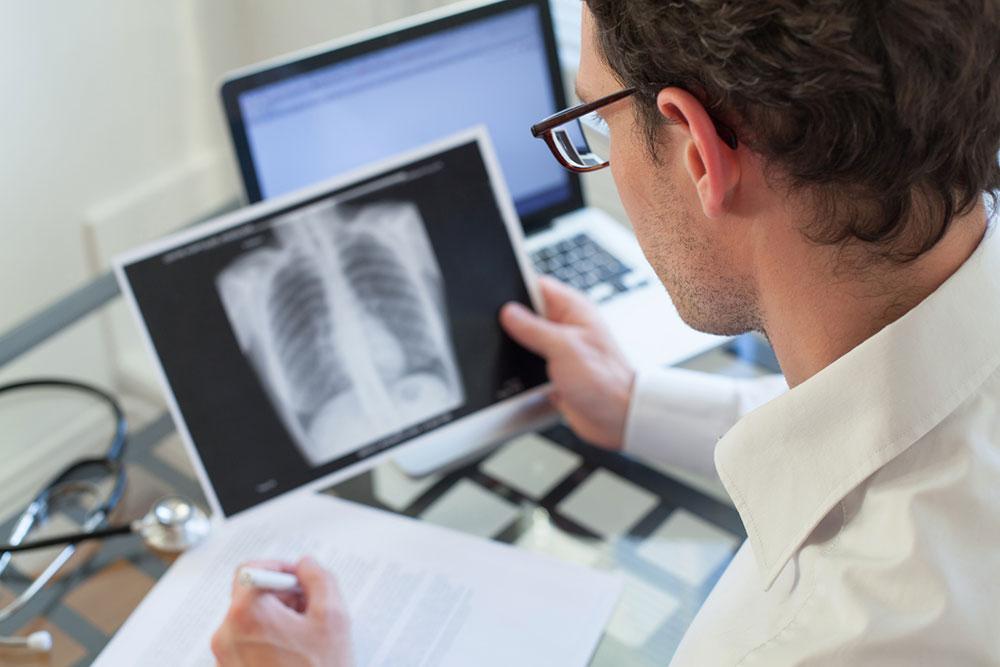Comprehensive Guide to Pneumonia: Recognizing Symptoms, Causes, and Diagnostic Strategies
This comprehensive article provides an in-depth overview of pneumonia, highlighting its key symptoms, causes, and diagnostic methods. Understanding these aspects is essential for early detection and effective treatment. The guide covers different types of pneumonia, risk factors, and modern diagnostic tools, equipping readers to recognize signs early and seek appropriate medical care. Timely diagnosis and tailored treatment can significantly improve recovery rates and reduce complications associated with pneumonia. Stay informed to protect your respiratory health and know when to seek medical attention.

Comprehensive Guide to Pneumonia: Recognizing Symptoms, Causes, and Diagnostic Strategies
Pneumonia remains a significant health concern worldwide, requiring timely medical intervention as soon as symptoms manifest. Its diverse presentation can often confuse patients and healthcare providers alike, making understanding the key signs, underlying causes, and proper diagnosis crucial for effective treatment. This comprehensive guide delves into the various aspects of pneumonia, including how to identify its symptoms, what causes the infection, and the best methods for accurate diagnosis. By understanding these fundamentals, patients and caregivers can take proactive steps toward early detection and optimal management of this serious respiratory condition.
Recognizing the Key Symptoms of Pneumonia
Symptoms of pneumonia can range from mild discomfort to life-threatening severity. The presentation largely depends on the pneumonia type—as bacterial, viral, or fungal—along with patient-specific factors such as age, immune status, and overall health. Early recognition of symptoms is essential for prompt treatment and improved outcomes. Typical signs include persistent cough, fever, chills, and difficulty breathing, but there are additional indicators to watch for.
Cough
One of the most prominent symptoms is a persistent cough that often produces mucus. This may be yellow, green, or sometimes contain traces of blood, indicating inflammation and infection in the lungs. The cough may worsen over time and become more severe, especially if the infection progresses.
Fever and Chills
Patients with pneumonia commonly experience a fever that can range from a mild increase to a high, alarming temperature. Accompanying the fever are chills, often causing shivering episodes that may persist for hours. The body's response to infection triggers these temperature fluctuations, signaling an immune response to the invading pathogen.
Difficulty Breathing
Shortness of breath is another hallmark of pneumonia. It may occur with exertion or even at rest in severe cases. Patients often feel a tightness in the chest and a sensation of not getting enough air, which can cause anxiety and worsen the clinical picture.
Chest Discomfort and Pain
Deep breaths, coughing, or movement can cause sharp, persistent chest pain. This pain is typically localized and worsens with respiration, indicating irritation of the pleura (the lung lining).
Headaches and Fatigue
Frequent headaches vary in intensity and are often accompanied by general fatigue, weakness, and malaise. These systemic symptoms reflect the body's inflammatory response to infection.
Excessive Sweating and Moist Skin
Helpful markers of ongoing illness include profuse sweating and clammy skin, often associated with fever and chills. These signs indicate that the body's defenses are actively fighting the infection.
Other Associated Symptoms
Reduced appetite, malaise, and general tiredness are common as pneumonia saps the body's energy reserves. Elderly individuals may also experience mental confusion, which can be a sign of severe infection or sepsis.
Types of Pneumonia and Their Unique Features
Understanding the different types of pneumonia helps in recognizing risk factors, symptoms, and appropriate treatment. The main categories are bacterial and viral pneumonia, with fungal infections also playing a role in immunocompromised individuals.
Bacterial Pneumonia
Often presenting with a sudden onset, bacterial pneumonia is characterized by high fever—sometimes reaching 105°F—along with intense sweating and rapid heartbeat. Patients may exhibit cyanosis (bluish lips or nail beds) due to low oxygen levels. Confusion or delirium is common in older adults, indicating severe systemic involvement.
Viral Pneumonia
Resembling influenza, viral pneumonia presents with symptoms like dry cough, headache, muscle aches, and fatigue. As the infection worsens, mucus production increases, and shortness of breath intensifies. Lips may turn bluish due to oxygen deprivation, especially in vulnerable populations.
Understanding the Causes of Pneumonia
Pneumonia is caused by a variety of pathogens, including bacteria, viruses, fungi, and other microorganisms. The nature of the causative agent influences treatment options and prognosis. Accurate identification of the pathogen is essential for targeted therapy.
Bacterial Causes
Streptococcus pneumoniae is the most common bacterial cause, but others include Haemophilus influenzae, Legionella, and atypical bacteria like Mycoplasma pneumoniae. Bacterial infections tend to produce rapid symptom progression and more severe clinical presentations.
Viral Causes
Viruses such as influenza, respiratory syncytial virus (RSV), and coronaviruses are frequent culprits. Viral pneumonia can follow or coexist with bacterial infections, complicating diagnosis and management.
Fungal and Other Causes
Fungal pneumonia, caused by organisms like Pneumocystis jirovecii or histoplasmosis, primarily affects immunocompromised individuals. Inhaled toxic substances or aspiration of fluids can lead to different forms of pneumonia that require specific treatments.
Risk Factors Increasing Pneumonia Susceptibility
Various factors predispose individuals to develop pneumonia. Recognizing these helps in preventive strategies and early diagnosis.
Smoking
Smoking damages lung tissue and impairs immune defenses, significantly increasing vulnerability to respiratory infections, including pneumonia.
Recent Respiratory Illnesses
Cold, influenza, or other viral infections weaken the respiratory tract and immune response, paving the way for secondary bacterial pneumonia.
Swallowing and Neurological Disorders
Conditions such as stroke, Parkinson’s disease, or other neurological impairments can impair swallowing, leading to aspiration pneumonia.
Chronic Lung Diseases
Cystic fibrosis, bronchiectasis, and chronic obstructive pulmonary disease (COPD) compromise lung function and increase infection risk.
Certain Systemic Conditions
Heart disease, diabetes, liver cirrhosis, and other systemic illnesses weaken overall immunity and lung resilience.
Residential Settings
Living in nursing homes or long-term care facilities exposes individuals to higher infection risks due to close quarters and vulnerable populations.
Immune Suppression and medical Procedures
Patients undergoing chemotherapy, immunosuppressive therapy, or recovering from surgery are at increased risk due to lowered defenses.
Weakened Immunity
Immune disorders, HIV/AIDS, and the use of immunosuppressive medications can predispose individuals to pneumonia.
Modern Diagnostic Techniques for Pneumonia
Accurate diagnosis is critical for effective treatment. Several diagnostic tools are available, ranging from simple physical exams to advanced imaging and laboratory tests.
Physical Examination
Healthcare providers listen for abnormal lung sounds, such as crackles, which suggest inflammation or fluid in the alveoli.
Chest X-ray
The primary imaging modality to confirm pneumonia presence and determine extent. It helps differentiate pneumonia from other respiratory conditions.
Laboratory Tests
Blood tests such as complete blood count (CBC), arterial blood gases, and sputum analysis aid in identifying the causative organism and assessing severity. Advanced diagnostics like chest CT scans or PCR testing can provide more detailed insights.
Treatment Strategies and Management
Prompt and appropriate treatment significantly improves recovery rates. Rest, hydration, and medical supervision form the cornerstone of pneumonia management. Tailored therapy based on the identified cause enhances effectiveness.
Medications
Antibiotics are essential for bacterial pneumonia, while antiviral agents may be indicated for viral cases. Supportive medications like antipyretics help manage fever and discomfort.
Supportive Care
Oxygen therapy, respiratory support, and adequate nutrition support the healing process. Hospitalization might be necessary for severe cases or in vulnerable populations.
Preventive Measures
Vaccination (e.g., pneumococcal and influenza vaccines), smoking cessation, good hygiene practices, and management of chronic illnesses help reduce pneumonia risk.
In conclusion, understanding the complexities of pneumonia—from recognizing early symptoms and risk factors to employing advanced diagnostic tools—is vital for effective management. Early diagnosis and appropriate therapy can dramatically improve patient outcomes and reduce the burden of this potentially life-threatening disease. If you suspect pneumonia, seek medical advice promptly to ensure timely intervention and optimal recovery.





